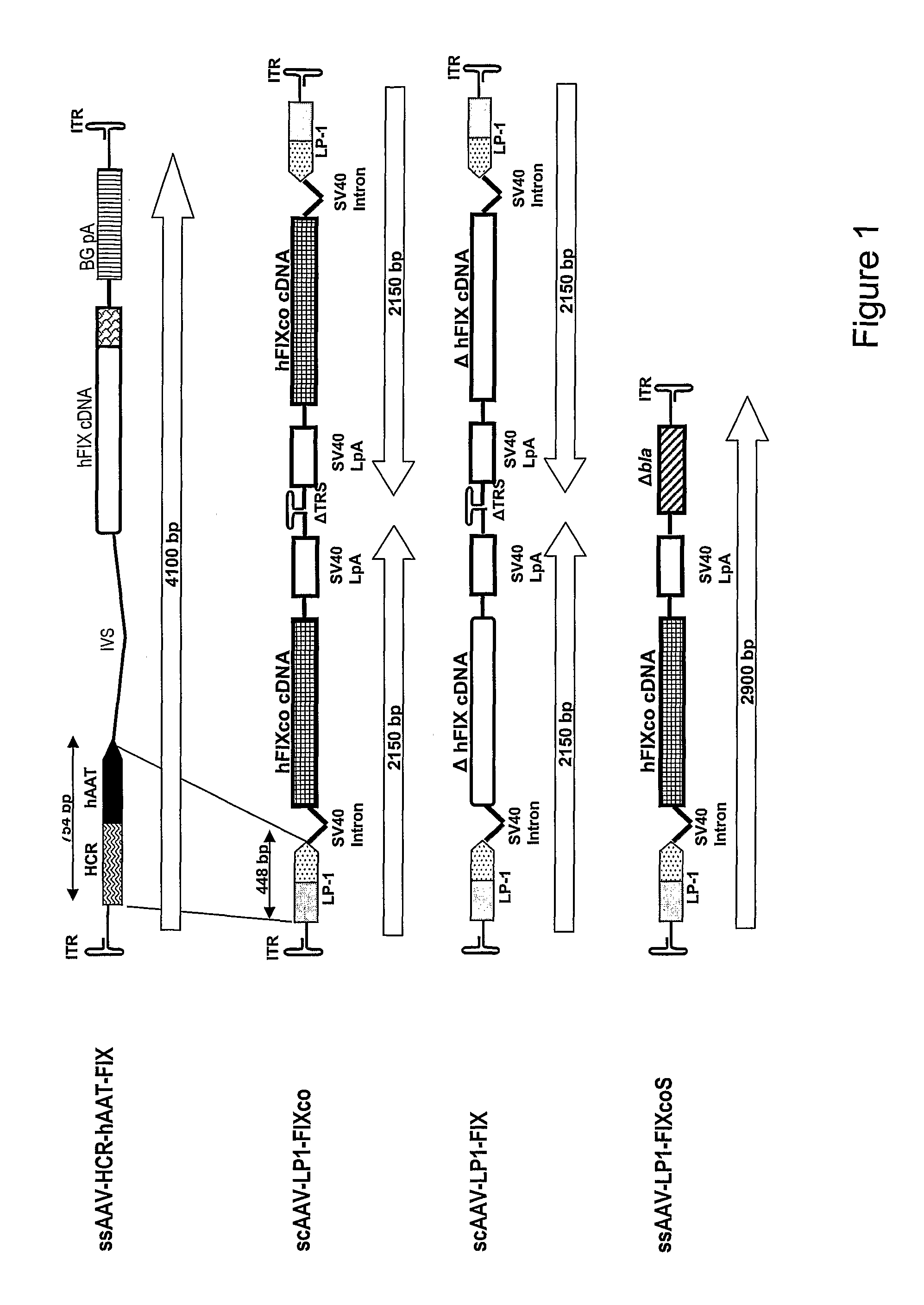Expression of factor IX in gene therapy vectors
a gene therapy and vector technology, applied in the field of gene therapy, can solve the problems of high treatment cost, limited therapy, and disability of arthropathy, and achieve the effect of stabilizing the expression of the hepatic factor ix gen
- Summary
- Abstract
- Description
- Claims
- Application Information
AI Technical Summary
Benefits of technology
Problems solved by technology
Method used
Image
Examples
example 1
Self Complementary Adeno-Associated Virus Vectors Containing a Novel Liver-Specific Human Factor IX Expression Cassette Enables Highly Efficient Transduction of Murine and Nonhuman Primate Liver
[0033]Summary
[0034]Transduction with recombinant adeno-associated virus (AAV) vectors is limited by the need to convert its single-stranded (ss) genome to transcriptionally active double-stranded (ds) forms. For AAV-mediated hemophilia B (HB) gene therapy, we have overcome this obstacle by constructing a liver-restricted mini human factor IX (hFIX) expression cassette which can be packaged as complementary dimers within individual AAV particles. These self-complementary (sc) genomes rapidly anneal after uncoating to form stable, active ds-linear molecules. This unique property resulted in a 20 fold improvement in hFIX expression in mice over comparable ssAAV. Administration of only 1×1010 scAAV particles lead to expression of biologically active hFIX at supraphysiological levels (8IU / ml) and ...
PUM
| Property | Measurement | Unit |
|---|---|---|
| clotting time | aaaaa | aaaaa |
| size | aaaaa | aaaaa |
| molecular weight | aaaaa | aaaaa |
Abstract
Description
Claims
Application Information
 Login to View More
Login to View More - R&D
- Intellectual Property
- Life Sciences
- Materials
- Tech Scout
- Unparalleled Data Quality
- Higher Quality Content
- 60% Fewer Hallucinations
Browse by: Latest US Patents, China's latest patents, Technical Efficacy Thesaurus, Application Domain, Technology Topic, Popular Technical Reports.
© 2025 PatSnap. All rights reserved.Legal|Privacy policy|Modern Slavery Act Transparency Statement|Sitemap|About US| Contact US: help@patsnap.com

